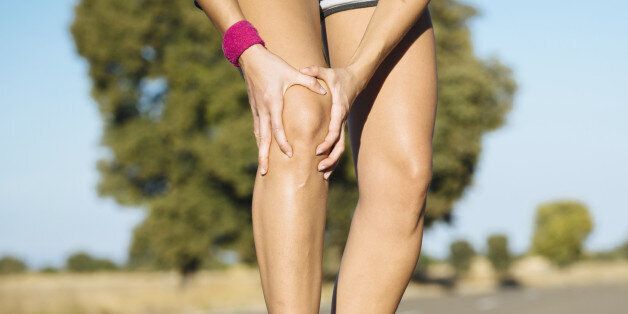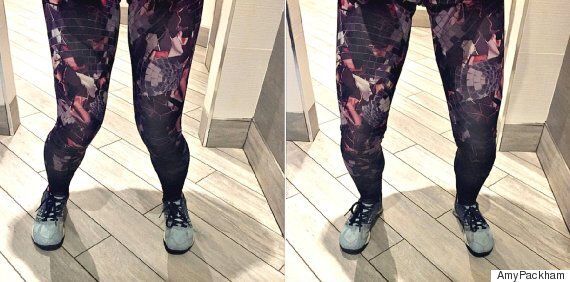
I was so disheartened when I started to get knee problems as a runner.
I'd spent months building up stamina and improving my fitness, only to have to stop running because of something I couldn't control. When you know physically you can carry on, but it would only damage your knees even more, it's a pretty shitty situation.
I started talking to other runners and googling the problems I had and soon realised how common 'runner's knee' is and how many people limit their training so they don't damage them any further.
My issue was (and still is) that when I squat, my knees do this (left) instead of this (right).

I know I'm partly to blame for having dodgy knees. I didn't cotton on until about six months into running that you should combine your training with strengthening exercises and non-impact workouts such as cycling or Pilates. So I basically just ran as much as I could. What an amateur.
Luckily I've found some sense since then. Here are seven things I've done that are (slowly but surely) helping my knees.
1) See a physio.
I went to my GP and was given a knee MRI scan, which basically just showed my knees were inflamed and sore. I was referred to a physio where they pointed out the problems I had - the main one being my knees bend inwards instead of straight forward when I squat. They found other issues too (tight calves, lack of flexibility and tight thigh muscles) that all contributed to my weak knees. I did (and still do) daily exercises they gave me to slowly build up strength.
2) Know it probably won't ever go away.
Some runners have knee problems, others don't. That's just how it is. On my first physiotherapy session I was told not to assume that once I'd worked on strengthening my knees, they'd all be better. "You're probably always going to suffer from knee pain to some extent," he told me. It realigned my focus of completely sorting my knees out, to adapting my workouts and adding knee strengthening exercises daily.
3) Start Pilates.
This has without a doubt been the best thing for my knees because it works on strength, core, flexibility and balance... everything I realised I'm bad at. At my first class, I was ashamed at how hard I found it compared to everyone else, but things take practise. I try to go weekly - and still find it tough - but I know it'll be doing wonders for my weak little knees.
4) Stop running.
Stating the obvious, I know. Not stopping completely, but pretty much. I can go out and run 5k and be fine, but if I do that three times a week I'll end up hobbling into the weekend. I do cardio in the gym by doing non-impact exercises like cross training and cycling. If I'm honest, it's helped me fall in love with other ways to exercise and added variety to my workouts, which make them more interesting. I love finding new bodyweight circuits to do in the gym.
6) Foam roll.
Runner's knee is also called "IT band syndrome". The IT band runs from the side of your hip down to your knee and when it's tight or inflamed, it causes problems. Enter the foam roller: probably the most painful yet satisfying massage you'll have on your leg. I picked one up online for less than a tenner and try and roll every night - along the IT band and across my thigh left to right for about two minutes each leg. Painful, but worth it.
7) Get a resistance band.
Crab walking, resistance bridges and leg lifts - all of these exercises will work your thighs and glutes so much more if you have a resistance band. Your glutes will burn (but that's the aim).